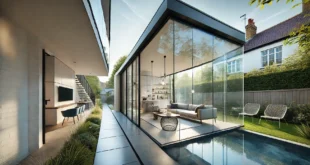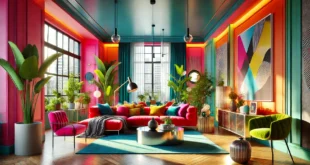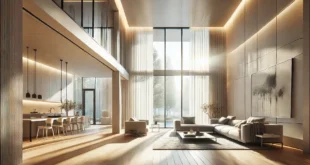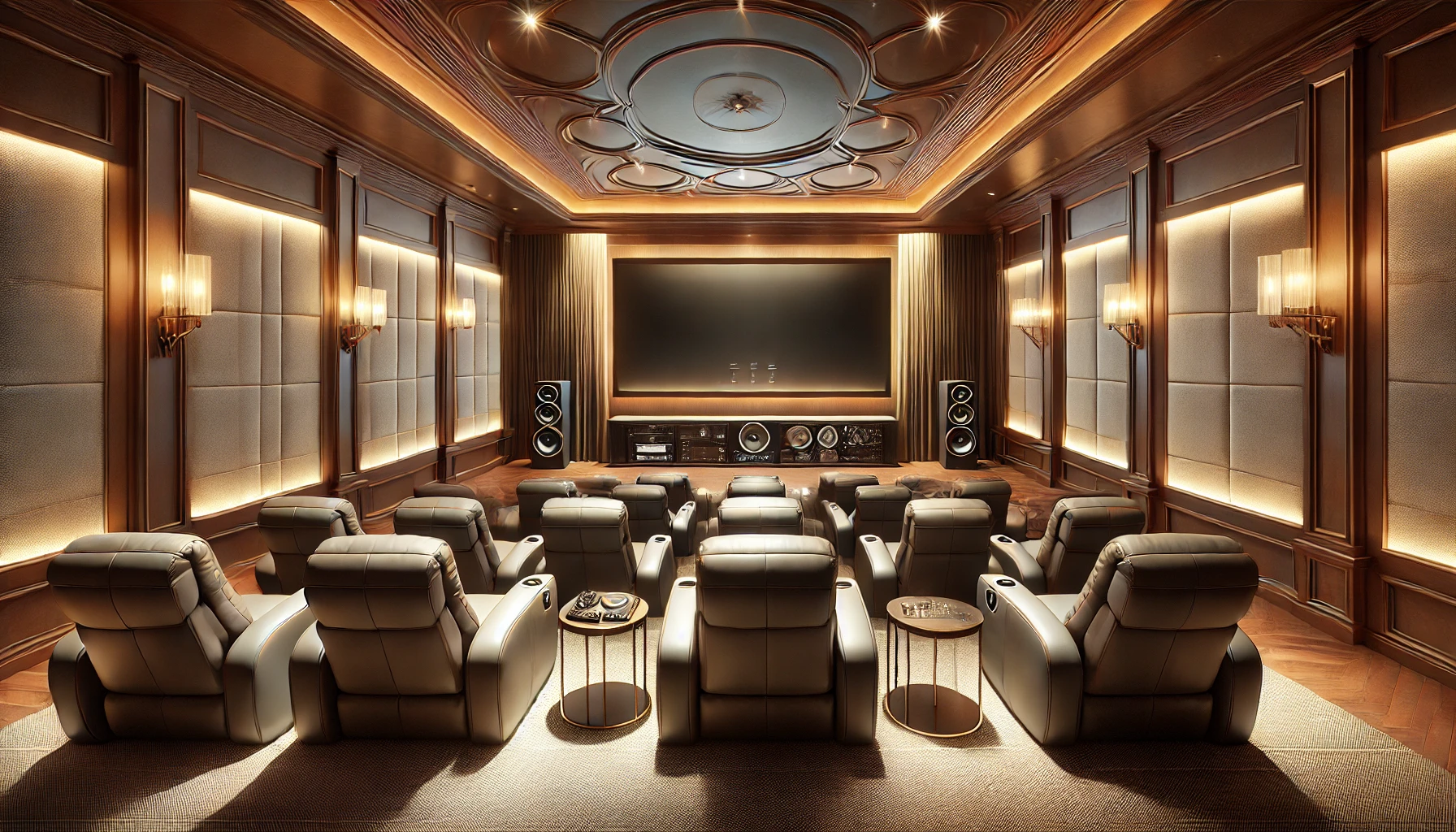
Hello, and welcome to this comprehensive guide on designing the ultimate home theater. If you’ve ever dreamed of creating a personal cinema in the comfort of your home, you’re in the right place. Home theater design is more than just setting up a screen and some speakers; it’s about creating an immersive experience that brings family and friends together. Whether you’re a movie buff, a gamer, or someone who loves watching sports in style, this guide will help you navigate the intricacies of home theater design.
At Home Designing Blog, we understand that home theater design requires thoughtful planning and a keen eye for detail. It’s about combining form with function. In this guide, we’ll break down the essentials, from selecting the right technology to setting up a comfortable, visually appealing space. We’ll also delve into the benefits of having a dedicated entertainment room and how it can enhance your home’s overall value and functionality.
The growing trend of home theaters reflects a shift in how people experience media. With technology advancing at breakneck speed, it’s easier than ever to replicate the cinematic experience at home. And while it might seem overwhelming, designing a home theater is something that, with the right guidance, can be both enjoyable and rewarding. So, let’s get started on your journey to creating a home theater space that’s perfect for you and your family!
Introduction to Home Theater Design
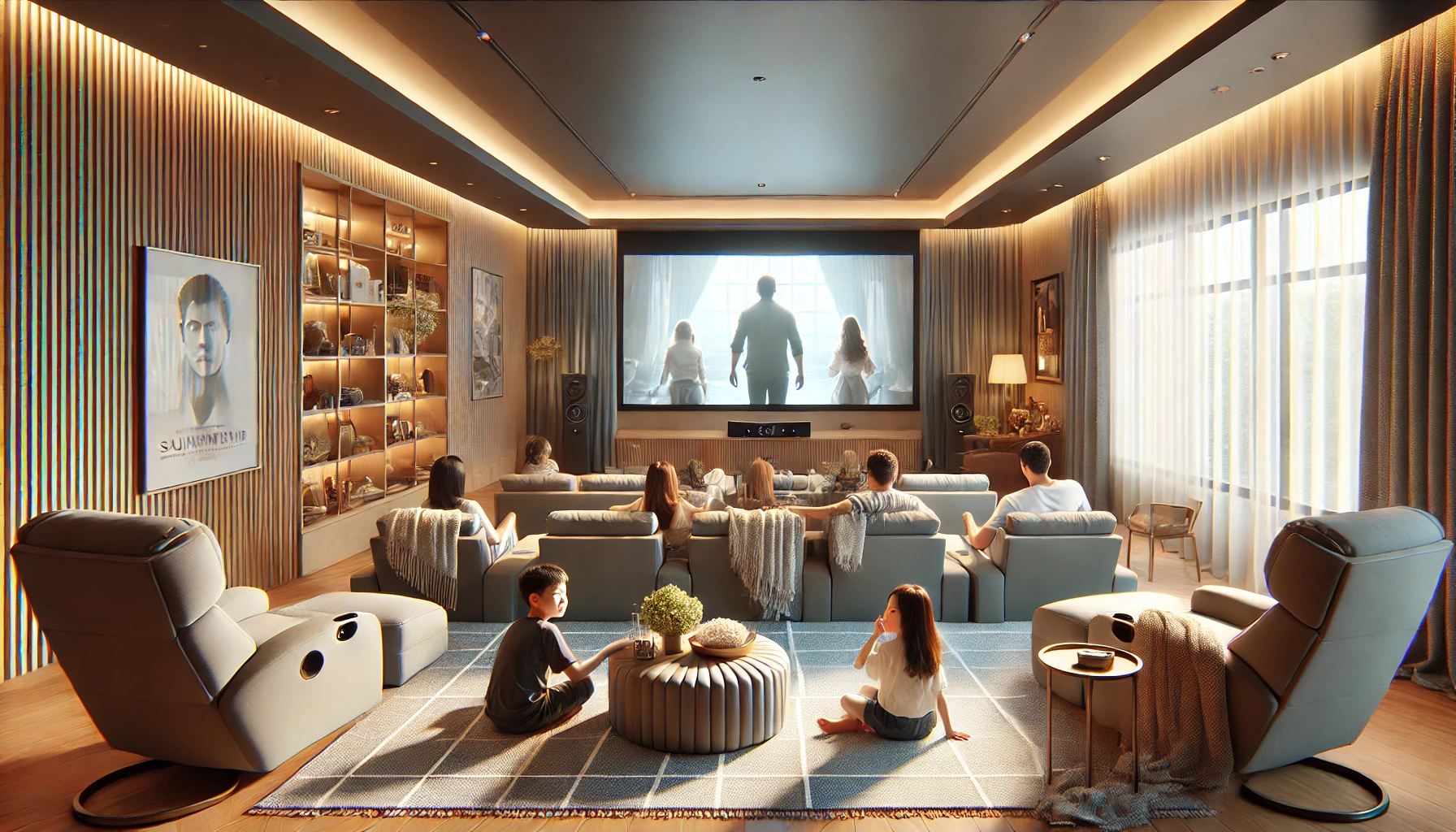
Understanding the Basics
Home theater design involves more than just installing a big-screen TV and a few speakers. It’s about carefully curating an environment that enhances both sound and visual experiences, ensuring you get the most out of your media. To create the ideal home theater, you’ll need to consider various components, including the type of screen, sound system, seating arrangement, lighting, and overall aesthetic design.
Why Home Theater Design is Gaining Popularity
The demand for home theaters has skyrocketed, particularly as more people seek to bring entertainment into their homes. With the availability of advanced technology and the increasing affordability of high-quality audio-visual systems, homeowners can now easily create an immersive movie-watching experience without leaving their house. This trend is further fueled by the rise of streaming services, making it easier to access high-definition movies and TV shows from the comfort of your home.
Essential Components of a Home Theater
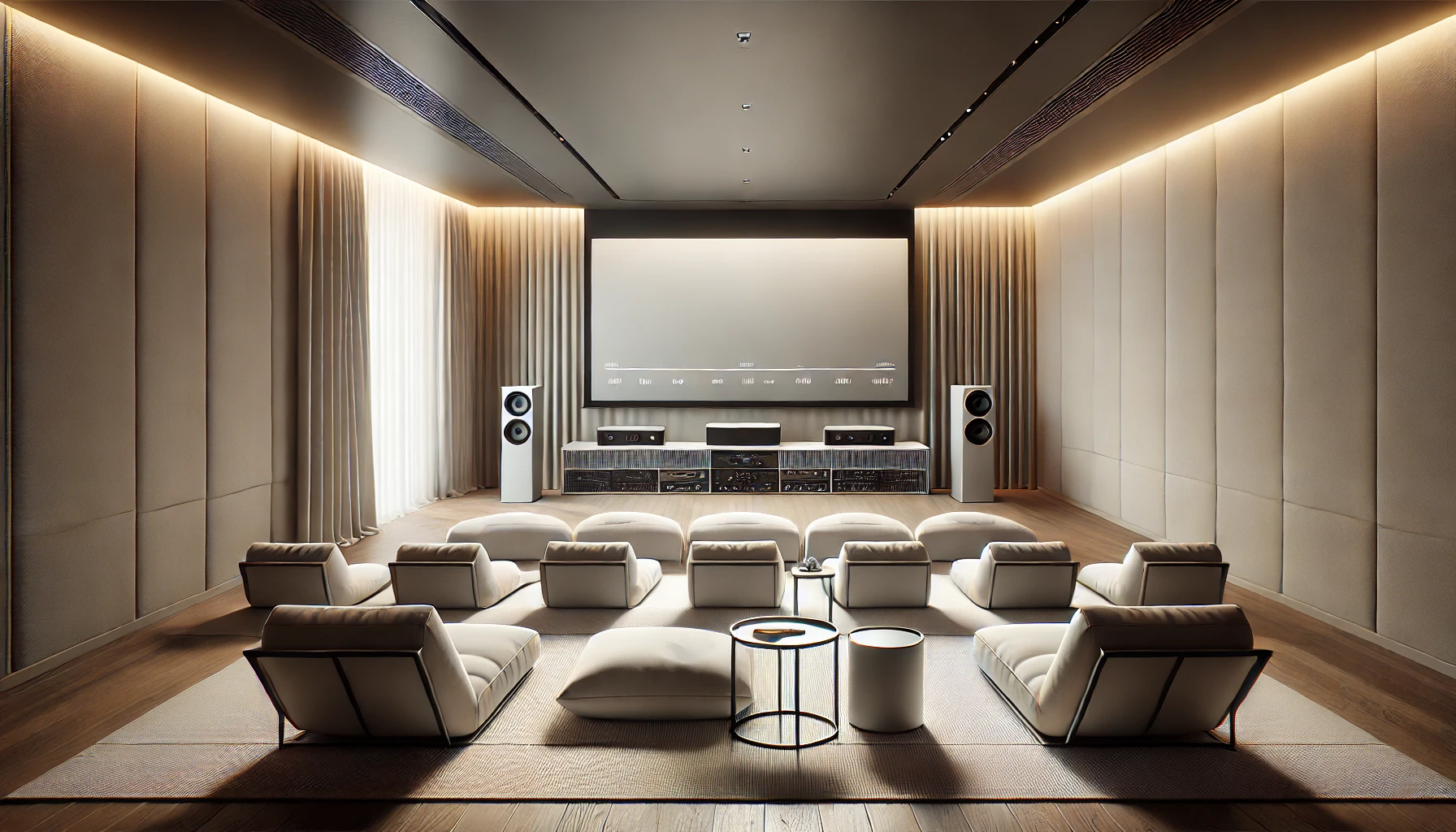
Choosing the Right Screen
The screen is arguably the most important element in any home theater. When choosing the right screen, it’s essential to strike a balance between size, resolution, and space. A common mistake is choosing a screen that’s either too big or too small for the room. Generally, the size of your screen should be proportional to the room’s size and seating distance. For a truly cinematic experience, many homeowners opt for projectors over flat-screen TVs, as they offer larger images and a more immersive feel.
Understanding Sound Systems
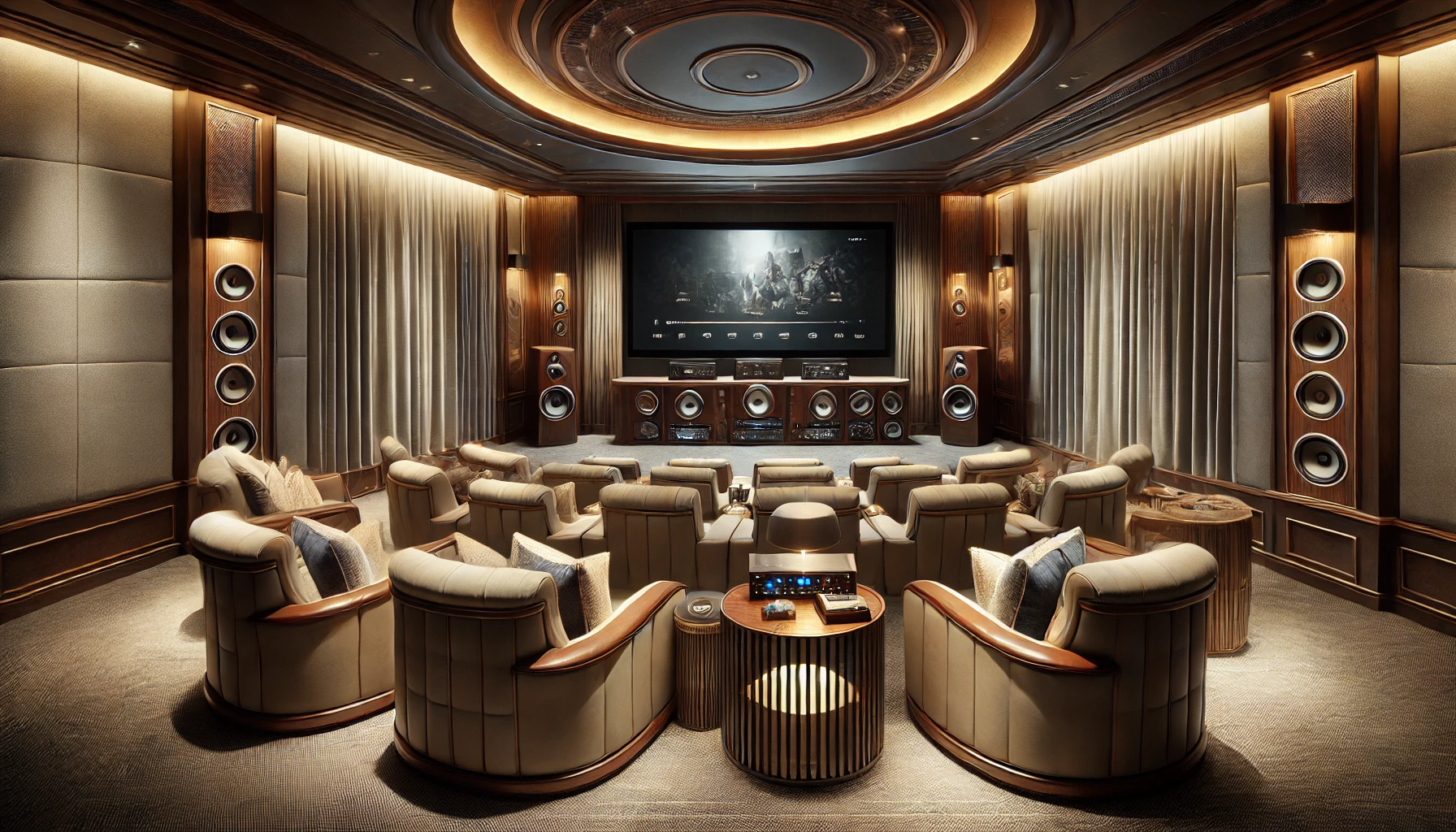
Sound quality is just as important as the visuals in your home theater. A high-quality surround sound system can make the difference between a good movie experience and a great one. When selecting a sound system, consider going for a 5.1 or 7.1 surround sound setup, where speakers are placed around the room to create a 3D audio effect. The correct placement of the speakers will ensure that sound is evenly distributed, giving you a fully immersive experience, whether you’re watching an action movie or listening to a concert recording.
Optimizing Seating in Your Home Theater
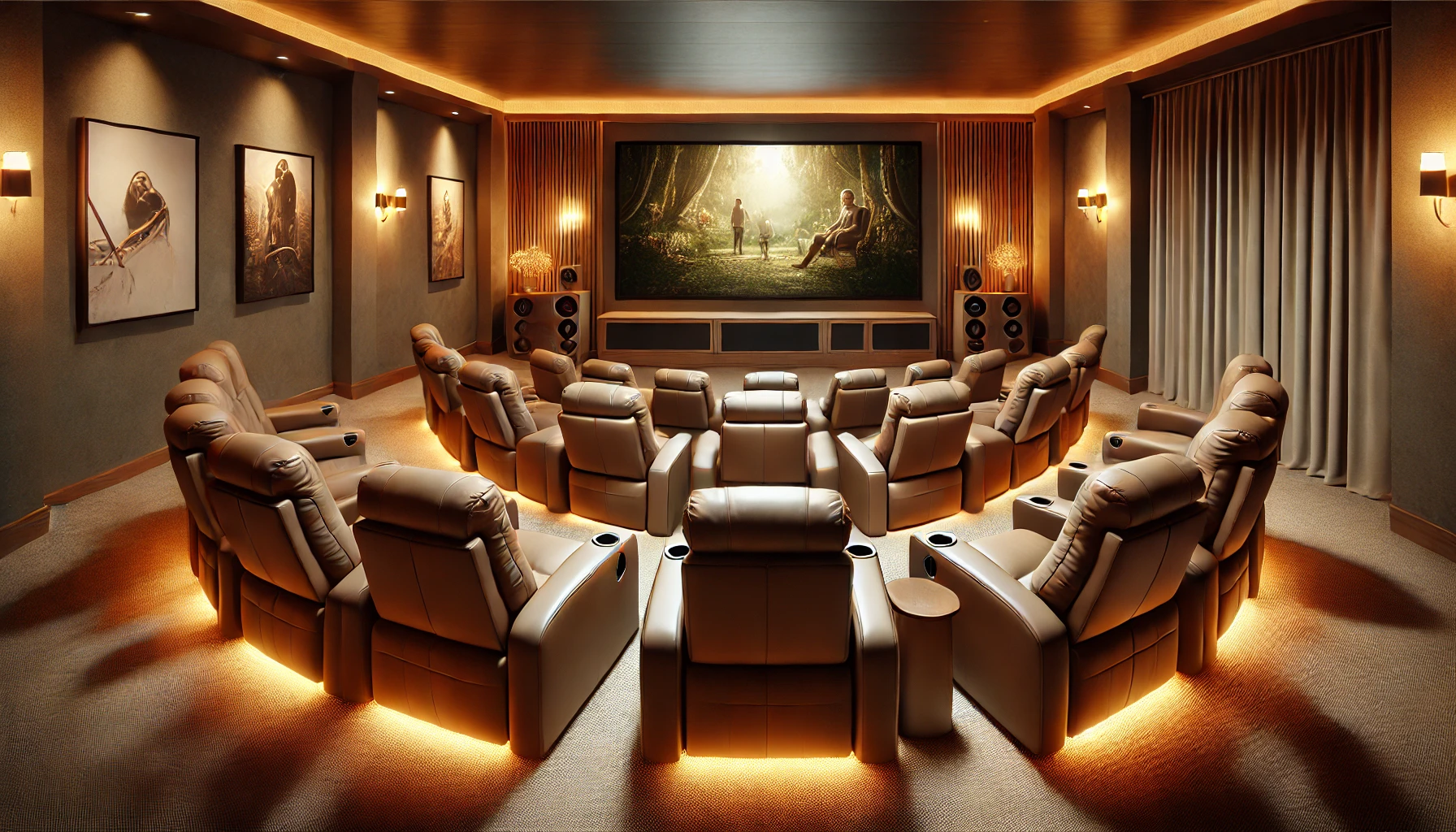
Comfortable Seating Options
Seating is a crucial element of home theater design. After all, what good is a top-tier sound system and ultra-HD screen if you’re not comfortable while watching? Home theater seating has come a long way, with options that range from luxurious leather recliners to theater-style chairs with cupholders and built-in charging stations. Ensure that your seating is not only comfortable but also positioned in a way that maximizes the viewing experience for everyone in the room.
Seating Layout for Maximum Viewing
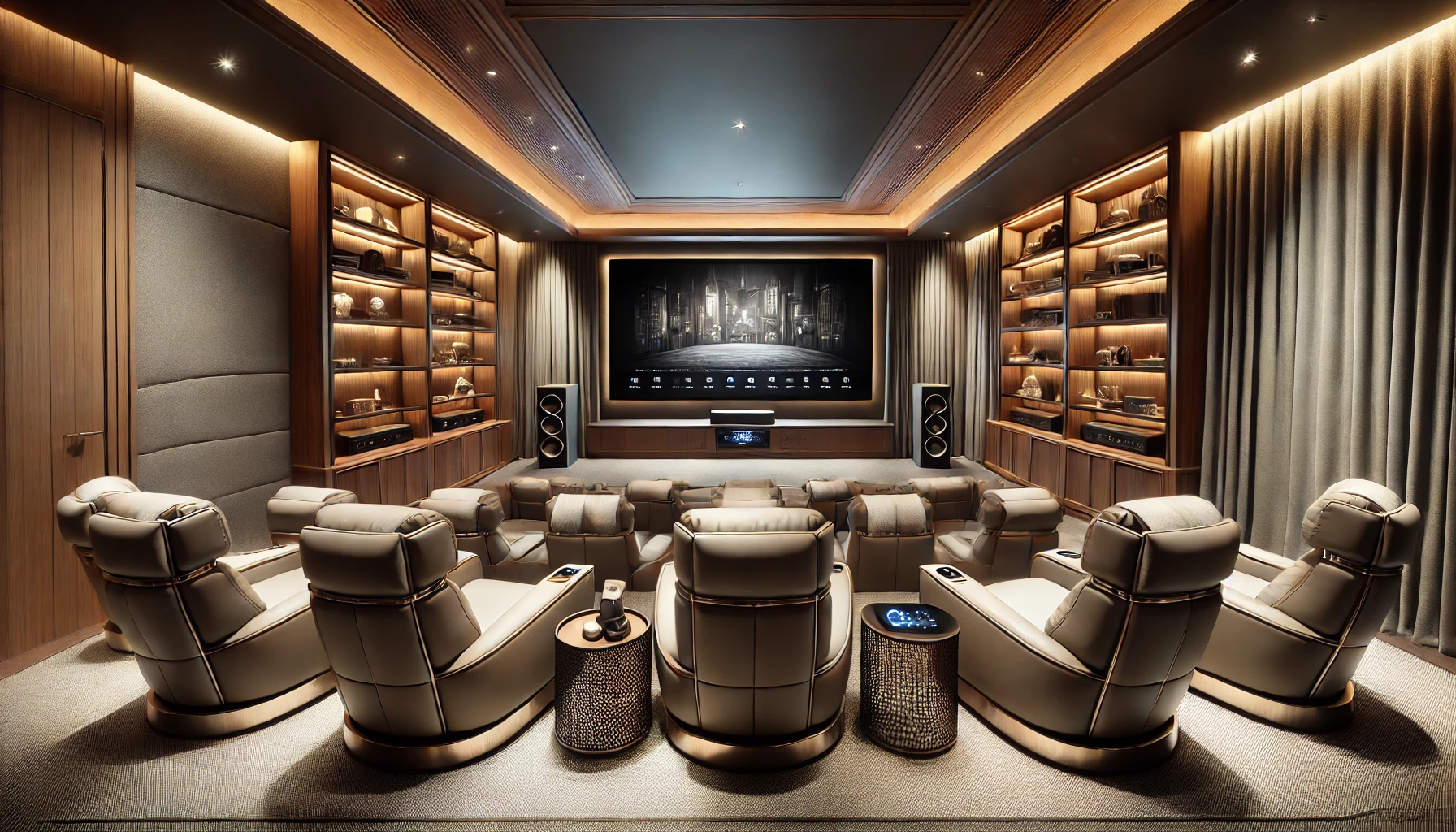
The layout of your seating can significantly impact your home theater experience. The goal is to ensure that everyone has an unobstructed view of the screen. Stadium seating, where rows are slightly elevated, is ideal for larger home theaters. In smaller rooms, consider a curved seating arrangement that offers each viewer a clear view. Additionally, seating should be placed at a proper distance from the screen to avoid eye strain and ensure an optimal viewing angle.
Lighting and Ambiance in Home Theater Design
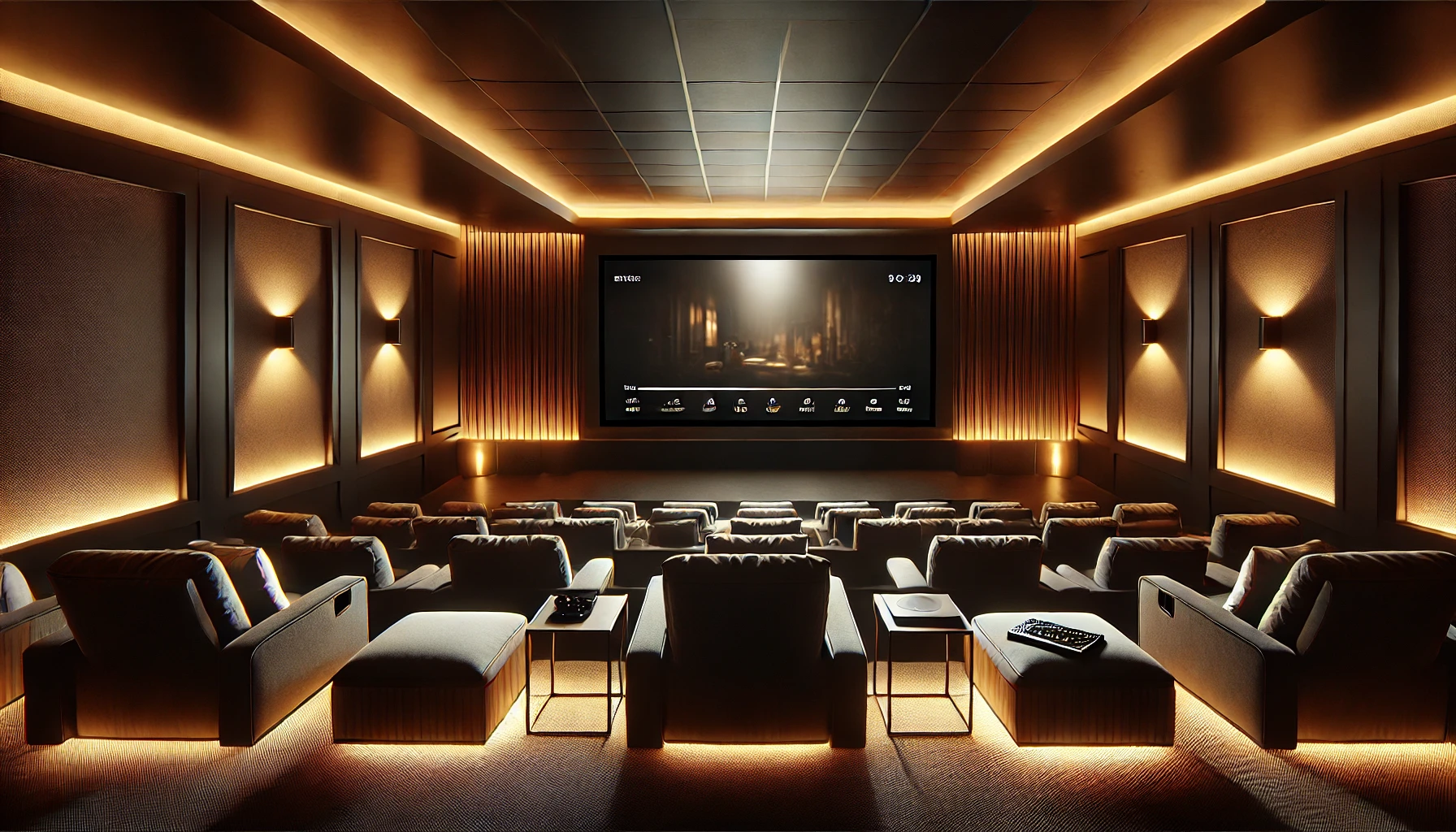
Creating the Right Mood with Lighting
Lighting can make or break the ambiance of your home theater. Too much light can wash out the screen, while too little can make the room uncomfortable and difficult to navigate. For a true cinematic experience, consider ambient lighting options like recessed lights or wall sconces that can be dimmed or turned off completely during viewing. LED strip lights behind the screen or along the floor can add a modern touch while also providing subtle illumination.
Automated Lighting Control
Automating your lighting with smart home technology can take your home theater to the next level. Smart lighting systems allow you to control the brightness and color of your lights with the touch of a button or even with voice commands. You can program your lights to dim when you start a movie, creating a seamless transition into the viewing experience.
Acoustics and Soundproofing
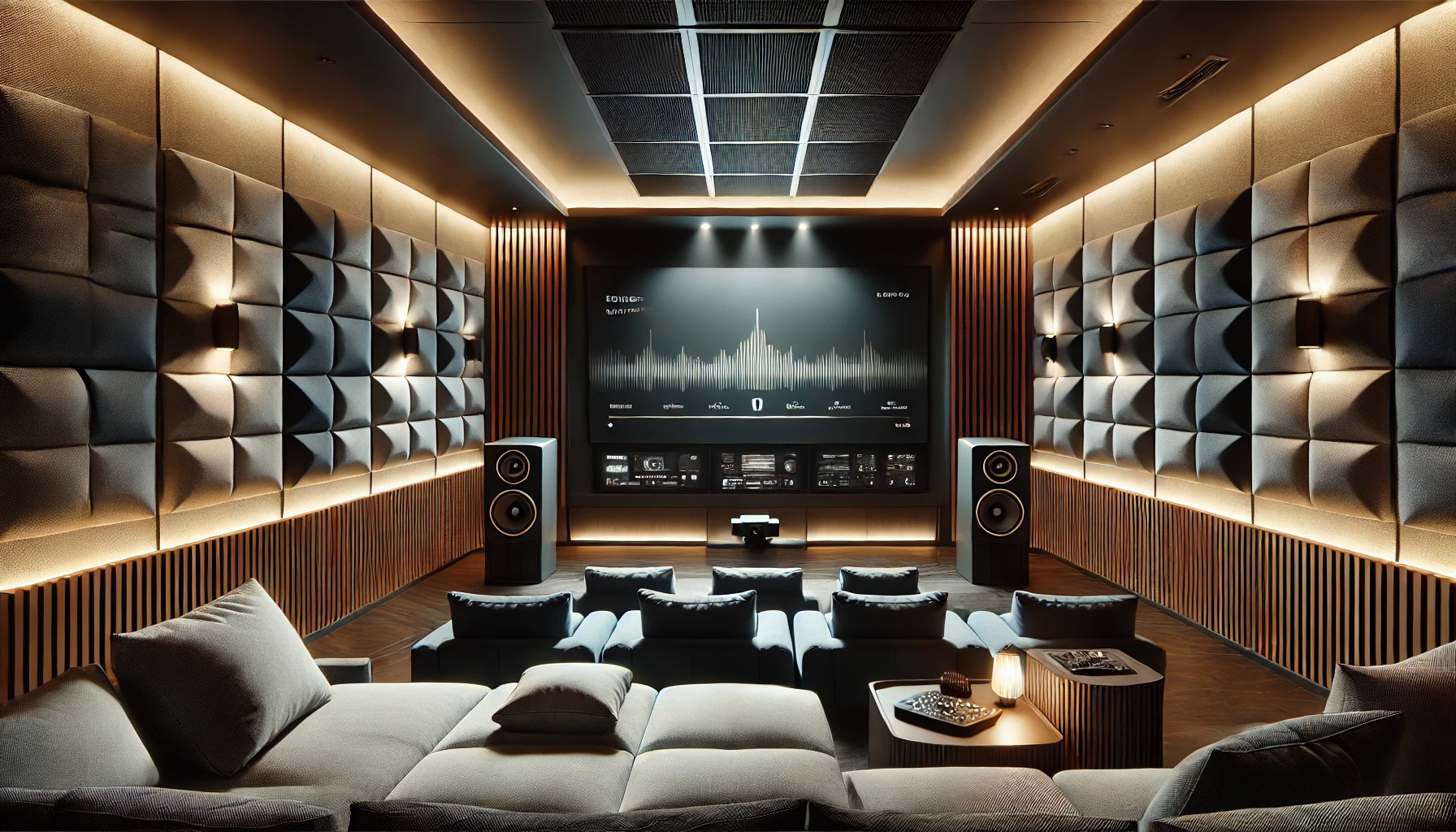
Soundproofing Your Home Theater
To get the best sound experience in your home theater, it’s important to address the room’s acoustics and soundproofing. If your theater is in a multi-purpose room or close to other living areas, you’ll want to reduce the amount of sound that escapes the room. Soundproofing techniques like adding acoustic panels, thick carpeting, and heavy curtains can help contain the sound while also improving the room’s overall audio quality.
Managing Echo and Sound Reflection
Echo and sound reflection can degrade the sound quality in a home theater, making dialogue hard to hear and distorting sound effects. Acoustic treatments, such as placing sound-absorbing panels on the walls and ceiling, can help eliminate these issues. Proper speaker placement and the use of soft furnishings can also help manage sound reflections.
Interior Design for Home Theaters

Choosing the Right Color Scheme
The color scheme of your home theater should create a relaxing atmosphere while also enhancing the movie-watching experience. Dark, muted colors are often best because they minimize light reflection, which can distract from the screen. Deep grays, navy blues, and even black are popular choices for home theater walls. Accents in warmer tones, like dark reds or browns, can add a touch of luxury and coziness to the space.
Theming Your Home Theater
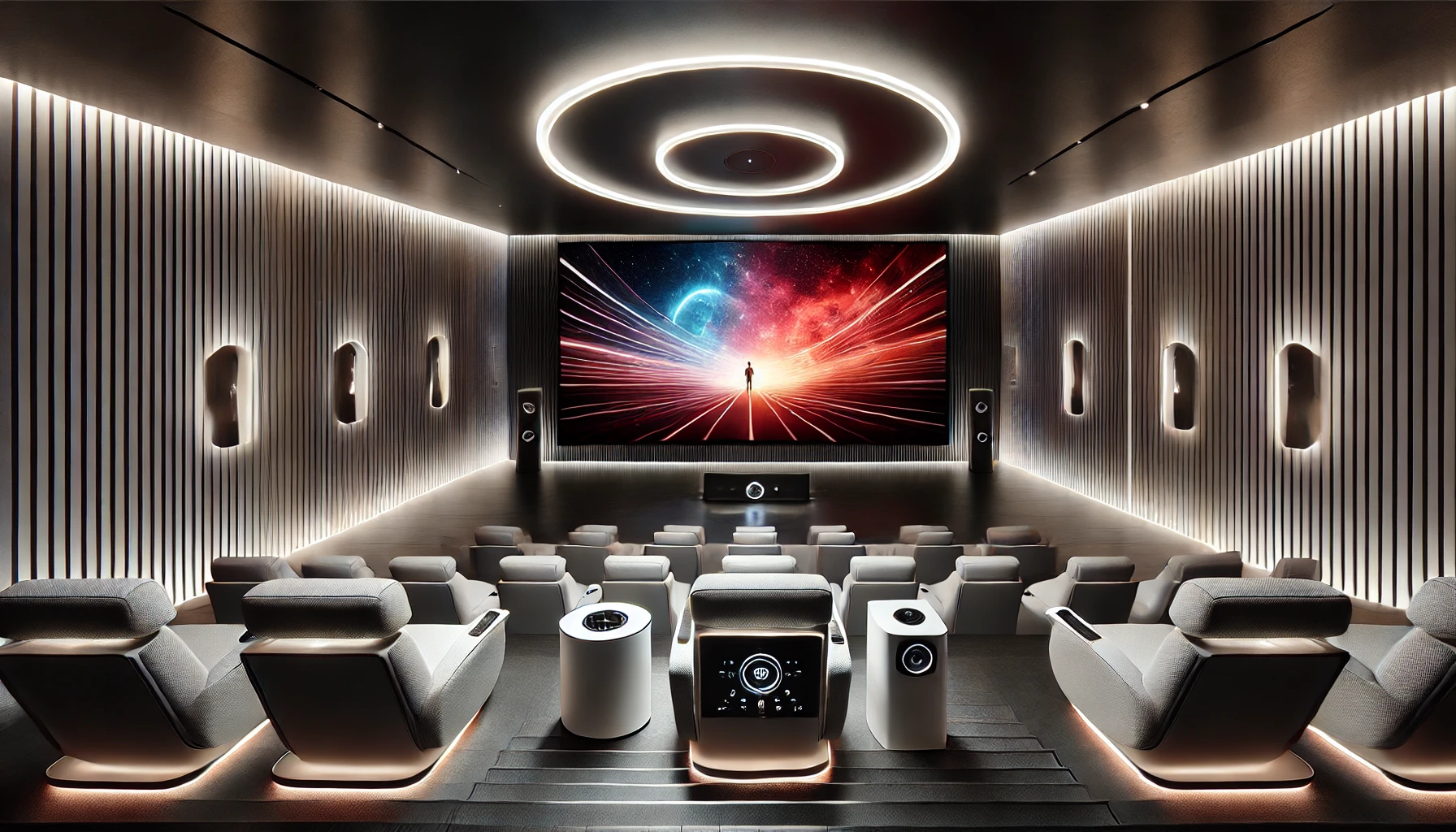
Many homeowners choose to theme their home theaters to reflect their personal style or favorite movies. Whether you want a retro Hollywood look, a sci-fi theme, or a minimalist modern vibe, the decor should enhance the theater experience without being distracting. Posters, memorabilia, and themed seating are all great ways to bring a bit of personality into the room while keeping the focus on the screen.
Budgeting for Your Home Theater
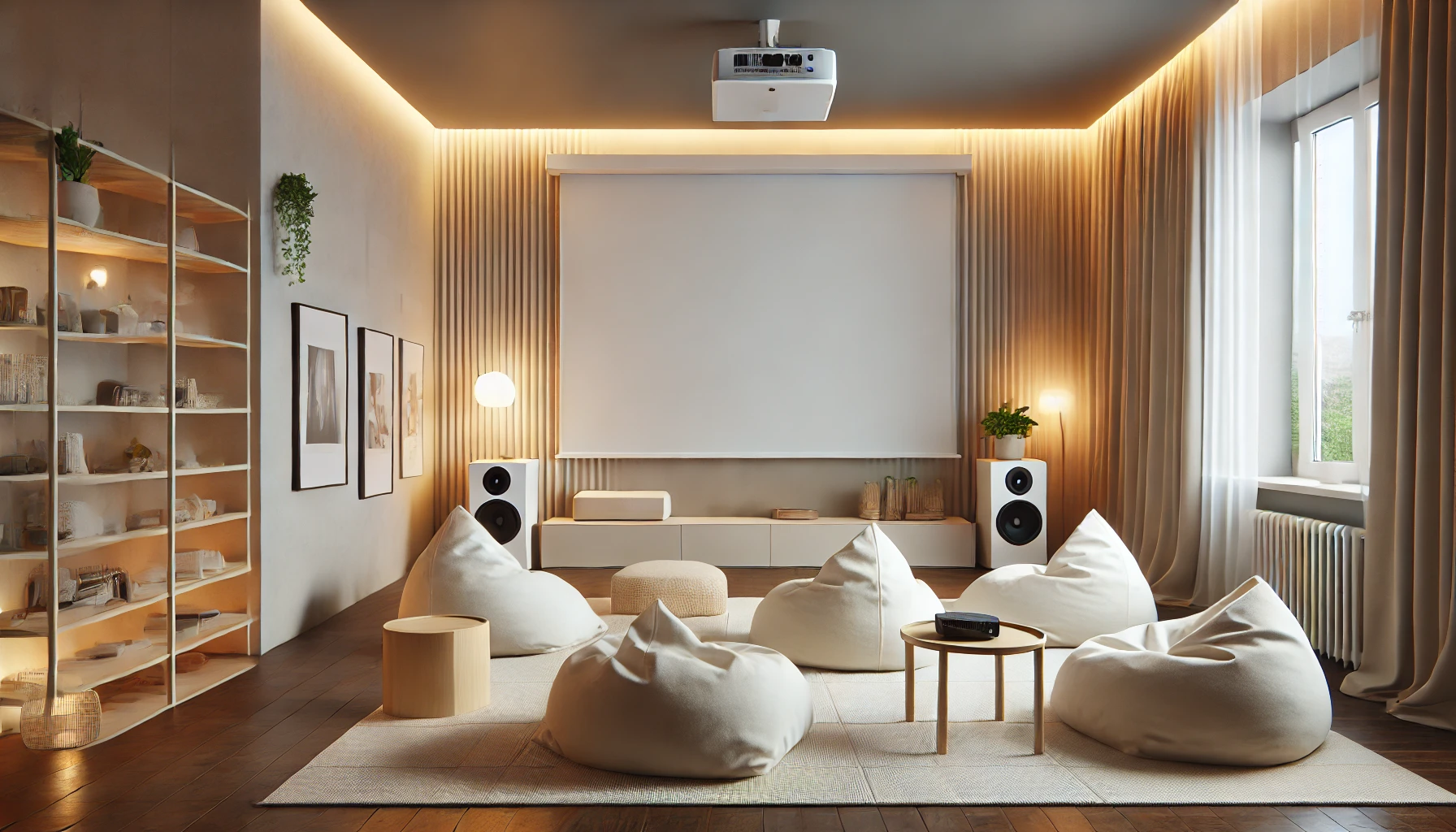
Maximizing Your Budget
Designing a home theater doesn’t have to be an exorbitant expense. There are ways to create a high-quality experience on a budget. For instance, you can opt for a high-quality sound system and a mid-range projector to balance costs. Additionally, many home theater enthusiasts find that DIY projects, like building your own risers for seating or installing your own acoustic panels, can save money while still delivering professional results.
DIY vs. Professional Installation
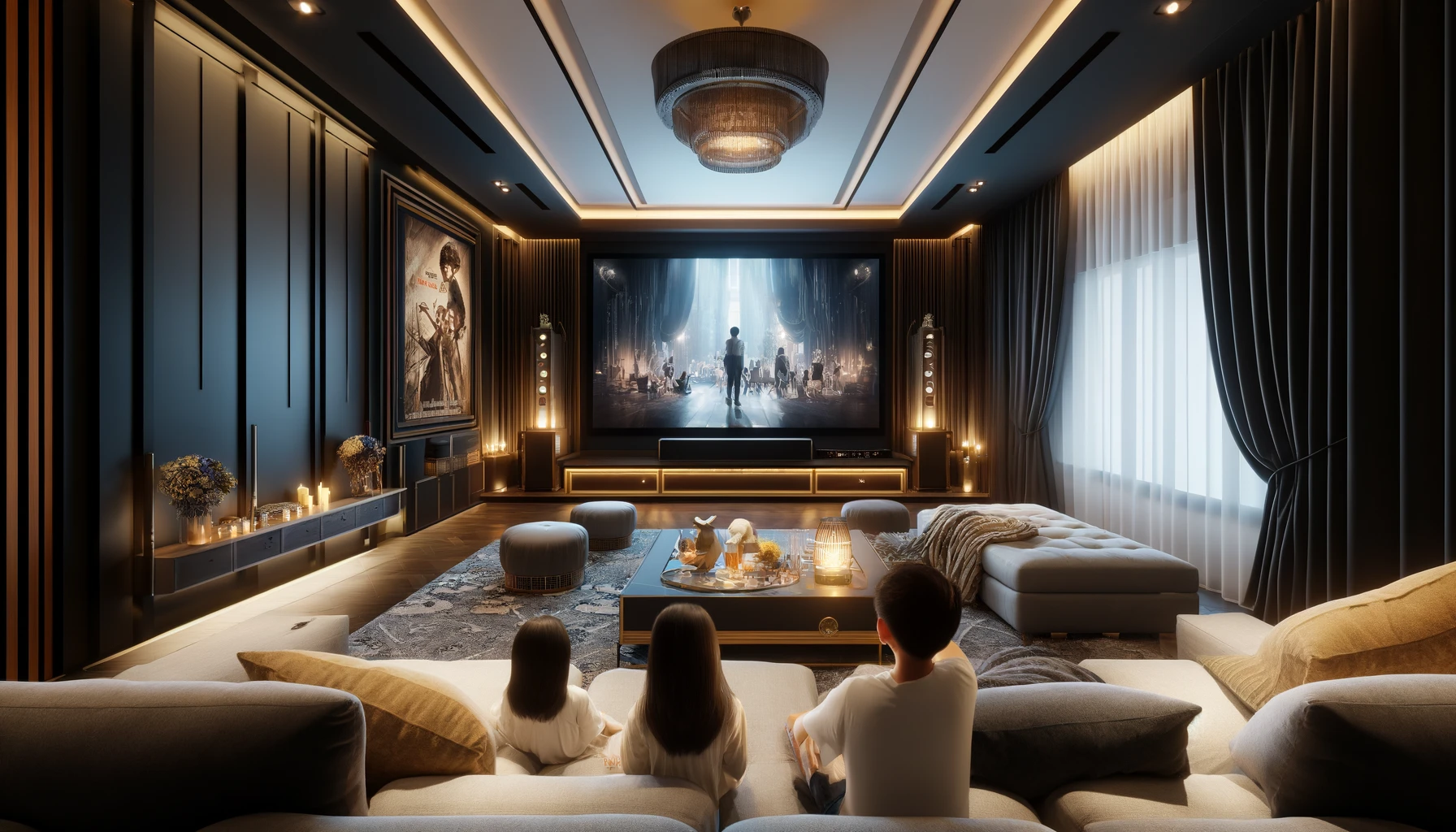
If you’re handy, you may be able to handle much of the home theater design yourself. However, for more complex installations, like wiring your sound system or setting up a projector, professional help can ensure that everything is done correctly and safely. Hiring professionals for the most technical aspects while handling simpler tasks yourself is a great way to get the best of both worlds: saving on labor while ensuring that the job is done right.
The Benefits of a Home Theater
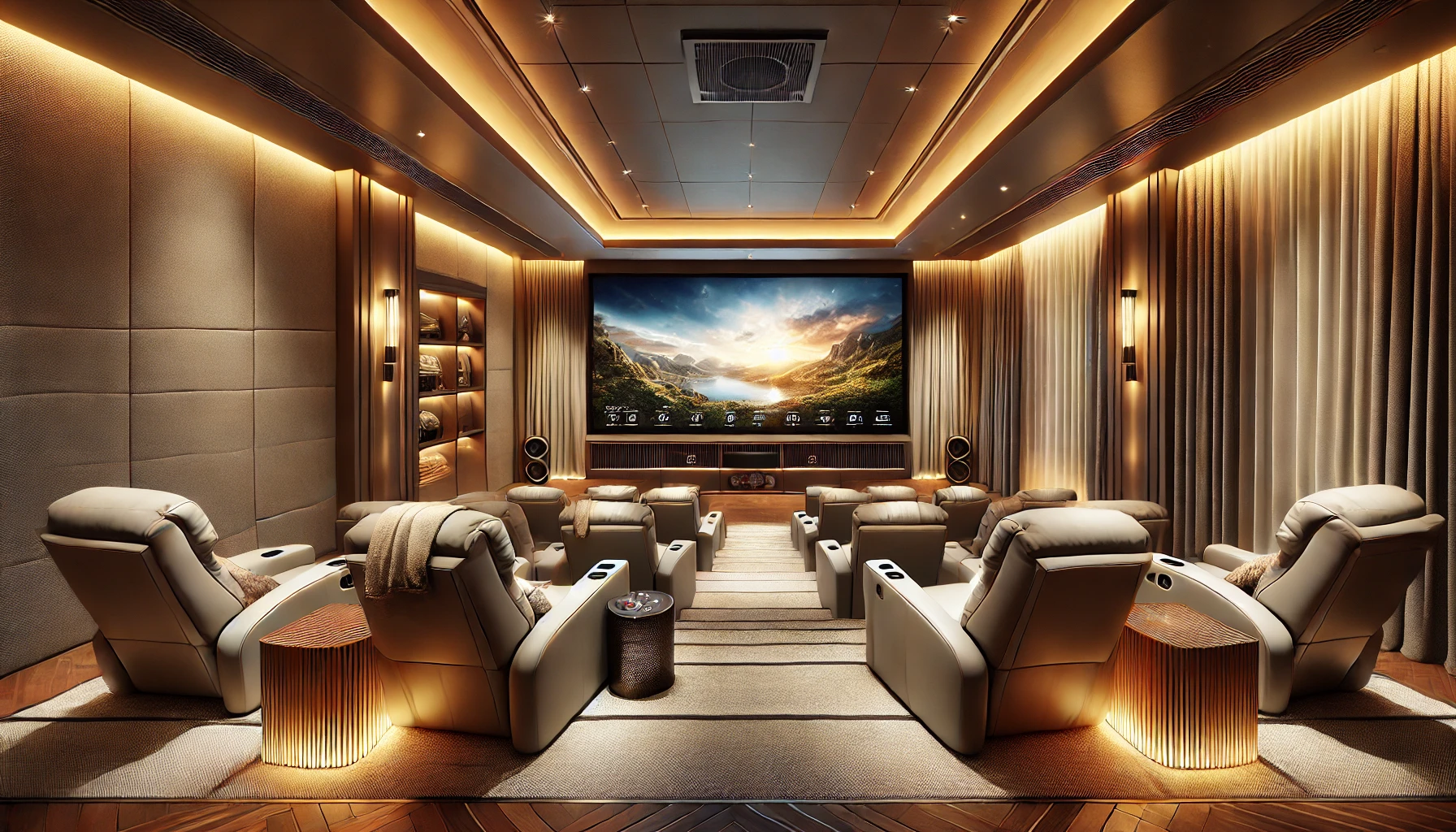
Entertainment at Your Fingertips
One of the primary advantages of having a home theater is the convenience of having a cinematic experience at your fingertips. You no longer need to drive to the theater or deal with crowds. With a home theater, you have the flexibility to watch movies, shows, or sports events whenever you want, in the comfort of your home. This convenience alone can make the investment worthwhile for many homeowners.
Increased Home Value
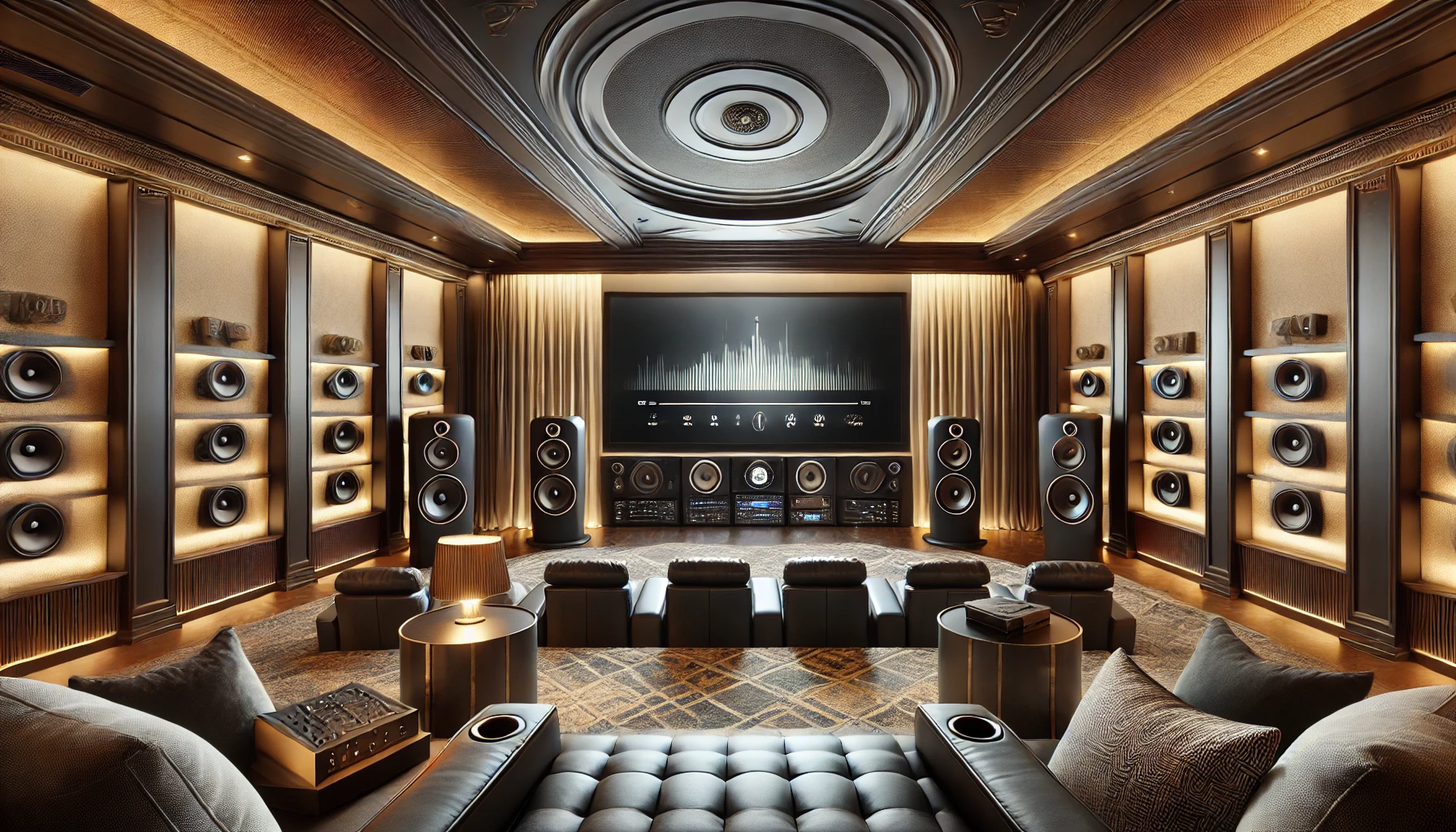
A well-designed home theater can increase the value of your home. Buyers are often drawn to homes that feature unique entertainment spaces, and a home theater can be a major selling point. Even if you don’t plan to sell your home anytime soon, the value it adds to your daily life makes it a worthwhile addition.
The Time to Crafting the Perfect Home Theater Design
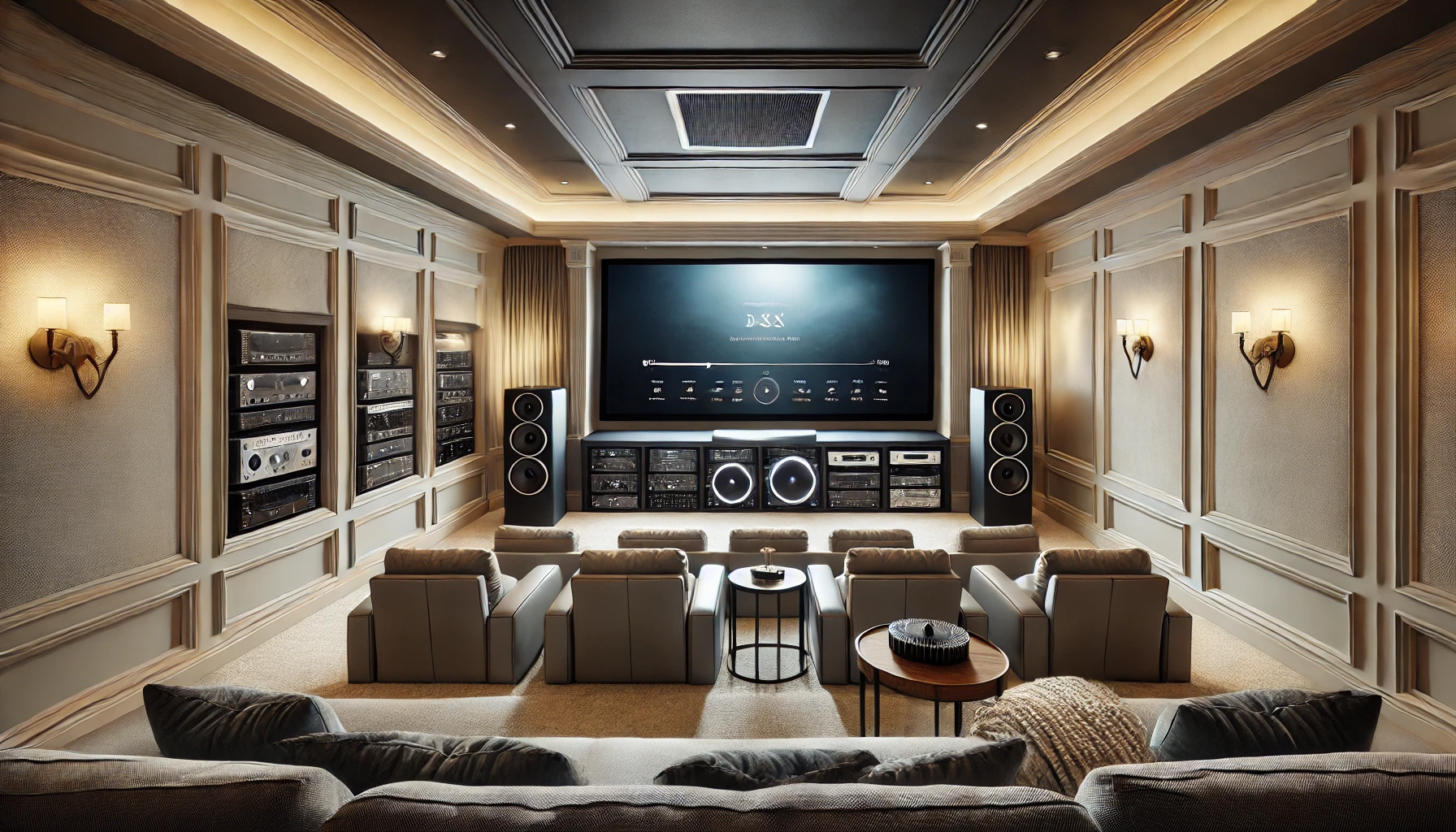
Take the First Step
Designing a home theater is an exciting journey that can transform how you and your family enjoy entertainment. Whether you’re just beginning to explore the possibilities or ready to start planning your space, now is the perfect time to take action. With today’s advancements in home technology and the growing affordability of top-tier audio-visual equipment, there’s never been a better time to invest in your own home theater.
Your Dream Theater Awaits
We specialize in helping homeowners bring their dream spaces to life. Whether you’re looking to install a state-of-the-art home theater or simply want to upgrade your current setup, we’re here to guide you every step of the way. Contact us today to schedule a consultation and start the process of turning your vision into reality.
F.A.Q Home Theater Design
What are the key elements of a home theater setup?
The key elements of a home theater setup include the display screen (TV or projector), surround sound system, comfortable seating, proper lighting, acoustic treatments, and smart control systems. These components work together to provide a cinematic experience at home.
How much space is needed for a home theater?
The space needed for a home theater depends on the type of setup you want. For a basic home theater, a small room with dimensions around 10×12 feet can work. However, for more immersive setups, a larger room, around 20×15 feet, would be ideal for better sound and seating arrangements.
What is the best sound system for a home theater?
The best sound system for a home theater is usually a surround sound system, like a 5.1 or 7.1 setup. Brands like Bose, Sonos, and Klipsch are popular for high-quality home theater speakers. The exact system depends on the room size, budget, and the level of audio quality you want.
Should I choose a projector or a TV for my home theater?
The choice between a projector and a TV depends on your room size and viewing preferences. A projector is great for larger screens and immersive viewing experiences, while a high-definition TV offers a sharper image and is easier to install in smaller spaces.
How can I optimize the acoustics in my home theater?
To optimize acoustics in your home theater, consider soundproofing the room with acoustic panels, thick carpets, and curtains. Proper speaker placement and avoiding reflective surfaces can also enhance the sound quality, making for a more immersive experience.
What type of lighting is best for a home theater?
The best lighting for a home theater is dimmable, ambient lighting. Recessed lighting, LED strip lights, or wall sconces can provide low-light environments that don’t interfere with the screen while creating a comfortable viewing atmosphere.
How much does it cost to set up a home theater?
The cost of setting up a home theater can vary widely, from around $1,000 for a basic setup with a TV and sound system, to $50,000 or more for a high-end system with a projector, advanced acoustics, and custom furniture. The total cost depends on your budget and the quality of the equipment.
What is the ideal seating arrangement for a home theater?
The ideal seating arrangement for a home theater is one that provides a clear view of the screen for everyone. In larger rooms, stadium-style seating works best, while in smaller rooms, a curved row of seats can ensure good sightlines. Recliners are a popular option for both comfort and style.
How can I soundproof my home theater?
To soundproof your home theater, you can install acoustic panels on the walls and ceiling, add thick carpets or rugs to the floor, and use heavy curtains or drapes. Soundproof doors and windows can also help contain the sound within the room, reducing noise leakage.
Can I build a home theater on a budget?
Yes, you can build a home theater on a budget by opting for affordable yet quality equipment. You can start with a mid-range TV or projector, basic 5.1 surround sound speakers, and simple seating. DIY soundproofing and using existing furniture can also help reduce costs.
What are the benefits of having a home theater?
Having a home theater offers numerous benefits, including a personalized movie-watching experience, enhanced entertainment for family and friends, increased home value, and the ability to enjoy films, games, and shows in the comfort of your home without the inconvenience of going to a public theater.
How do I choose the right screen size for my home theater?
The right screen size for your home theater depends on the distance between the screen and the seating area. As a rule of thumb, for every foot of distance from the screen, you should have about 10 inches of screen size. For example, if you are seated 10 feet away, a 100-inch screen would be appropriate.
Can I use my living room as a home theater?
Yes, you can use your living room as a home theater. Many people convert their living rooms into hybrid spaces by adding a large TV or projector, a sound system, and comfortable seating. However, you may need to make adjustments, such as adding blackout curtains or optimizing the sound system for the open space.
What are the latest trends in home theater design?
Some of the latest trends in home theater design include smart lighting systems, voice-controlled devices, 4K and 8K projectors, wireless surround sound systems, and minimalist decor. Homeowners are also incorporating multi-purpose spaces, where the home theater doubles as a gaming room or family lounge.
What should I consider when choosing home theater furniture?
When choosing home theater furniture, consider comfort, durability, and how it fits within the room’s layout. Recliners or loungers with cup holders and USB charging ports are popular choices. The furniture should also be easy to arrange to maximize both comfort and screen visibility for everyone in the room.
 Home Designing Get expert home decor tips and design inspiration at HomeDesigning.blog. Transform your living spaces with trending styles and DIY ideas!
Home Designing Get expert home decor tips and design inspiration at HomeDesigning.blog. Transform your living spaces with trending styles and DIY ideas!
